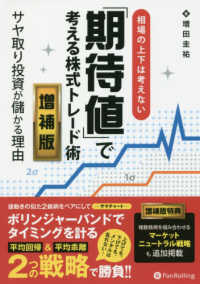- ホーム
- > 洋書
- > 英文書
- > Science / Mathematics
Full Description
This book offers a comprehensive analysis of microalgal cultivation methods and optimization of astaxanthin production for various applications, including clinical uses, algae polymers, proteins and pigments, food applications and packaging, algae forming, cosmetics, and more.







